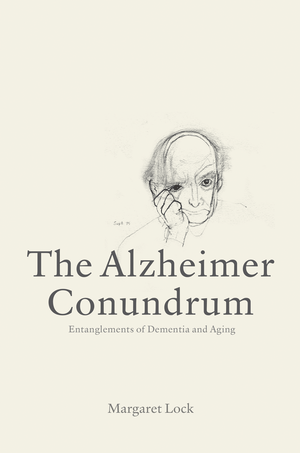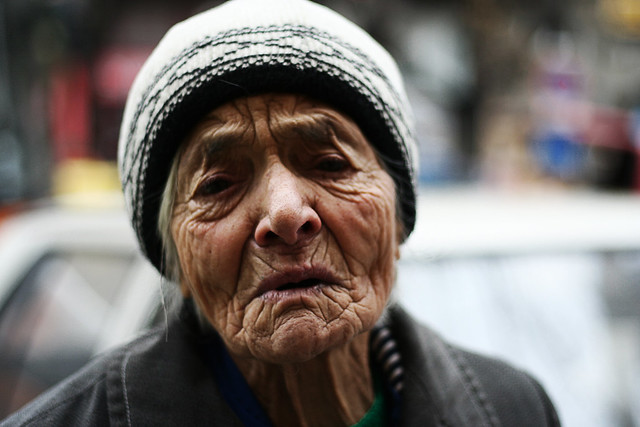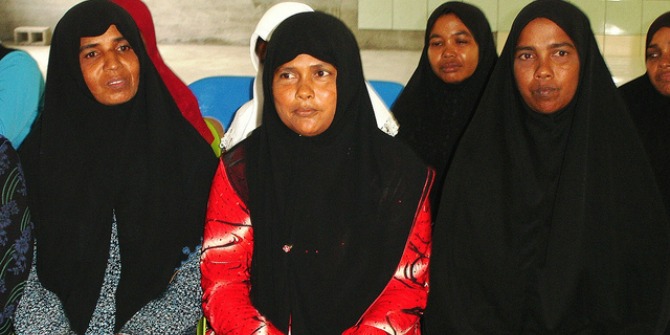Despite hundreds of millions of dollars invested in medical research, no effective treatment has been discovered for Alzheimer’s disease, the most common form of dementia. In this book, Margaret Lock attempts to expose the predicaments embedded in current efforts to slow down or halt Alzheimer’s disease through early detection of presymptomatic biological changes in healthy individuals. This empirical account is a very welcome addition to the literature on biomedical uncertainty and should be read by sociological and anthropological scholars interested in complex neurological disorders, writes Des Fitzgerald.
 The Alzheimer Conundrum: Entanglements of Dementia & Aging. Margaret Lock. Princeton University Press. October 2013.
The Alzheimer Conundrum: Entanglements of Dementia & Aging. Margaret Lock. Princeton University Press. October 2013.
In October 2013, several UK media outlets reported on a potential ‘treatment breakthrough’ for Alzheimer’s Disease. Having reversed neurodegeneration in a mouse model of prion disease, researchers suggested that their data might help to find ‘new therapeutic targets for developing drugs against…neurodegenerative diseases.’ This study was hailed in the media as a ‘turning point‘, – one offering ‘real hope to sufferers.’ And yet a Q&A elsewhere pointed out that many mouse studies never make it out of the laboratory, that we were many years away from any treatment, and that, according to Alzheimer’s Research UK, even whether the research ‘is relevant to other neurodegenerative disease such as Alzheimer’s, still remains to be investigated.’
This delicate crossing of hope, uncertainty, and high-tech bioscience is precisely what is at stake in Margaret Lock’s The Alzheimer Conundrum. Lock, a distinguished medical anthropologist, is well known for her work on the intersections of bodies, cultures, and environments, analysed through attention to aging, organ transplantation, and genomics, among other topics. This book, her latest, draws on more than 80 interviews with dementia experts on observations in outpatient facilities, on regular attendance at Alzheimer’s-themed events, and a very thorough immersion in the neuroscientific and genetic Alzheimer’s literature.
Lock is especially interested in uncertainty – and its persistence, even efflorescence, in the face of scientists’ dogged commitment to understanding Alzheimer’s through a biomedical and neurogenetic framework. Alzheimer’s, Lock tells us, is ‘the most commonly diagnosed subcategory of dementia, [and] proves to be an elusive phenomenon’ (p.11). She locates this uncertainty in a wider series of tensions between: a ‘localization’ theory of Alzheimer’s focused on neuropathology and an ‘entanglement’ theory of minds and environments; the ambiguous disconnect between pathology and ‘normal aging’; and questions over how in a ‘post genomic’ era, researchers should interpret ‘the numerous extrasomatic factors’ that affect dementia (p.5, p.232, p.240). Lock’s own commitments are admirably clear: against a reductionist bioscience ‘oriented primarily to the development of effective drugs,’ she argues for attention to ‘social, political and environmental factors, including poverty, inequality, discrimination and racism’ (p.229, p.15).
The book is split in to two sections. The first half – on attempts to define and standardize Alzheimer’s, focusing especially on the ‘amyloid cascade’ hypothesis – will be familiar to readers of recent sociological or anthropological work on neuropsychiatric disorder. Lock analyses the standardization of Alzheimer’s around concerns that were as much political and bureaucratic as biological (p.41), the failed desire for a ‘therapeutic “silver bullet”’ (p.48), the latter technocratic shift to neuropathology (p.65) – and so on. Most compelling is Lock’s account of the shift to Alzheimer’s ‘prevention.’ She shows how a new diagnosis, Mild Cognitive Impairment, enrolled a novel cohort of patients, helping to create a larger ‘at-risk’ population (p.79). Drawing on interview data with at-risk patients, she shows how little attention has been paid to ‘the uncertainties associated with predicting the future by means of biomarker testing,’ as well as the risk of generating unresolved ‘chronic anxiety’ through new forms of ‘embodied risk’ (p.98, p.93, p.77).

The second half focuses on the search for a genetic marker for the amyloid hypothesis. As Lock makes clear, this research proceeds in the face of on-going uncertainty about the actual role of amyloid in the causation of Alzheimer’s (p.154). By a distance, the most powerful chapter and, not coincidentally, the chapter most reliant of Lock’s own interview material, investigates how people actually live with ‘embodied omens’ of Alzheimer’s Disease (p.174). Here, Lock shows how many people she spoke to were simply ‘unclear about what exactly they should do with the information’ about their risk (p.192) – and how many actually, and in the face of biomedical insistence, re-interpreted their risk through personal, familial narratives of inheritance and resemblance: ‘I look like my mother,’ one participant tells here: ‘so…I would not be surprised that I carried the risk’ (p.195). Lock shows how individual senses of subjectivity and selfhood remain remarkably resilient in the face of biomedical narratives – that stories about families, solidarity, and care, are what continue to dominate patients’ concerns (p.201, p.206).
The Alzheimer Conundrum will certainly be read by sociological and anthropological scholars interested in complex neurological disorder: Lock’s contributions on ‘prevention,’ and ‘susceptibility,’ on the creation of novel patient-categories, and the re-making of complex neurogenetic narratives, will especially find a wide audience. However, I have two outstanding criticisms. First, I feel that the book is not very compellingly put together: while Lock’s immersion in the scientific literature is impressive, there are too many drawn-out passages reporting, at great length, the details of specific articles, responses to those articles, newspaper bowdlerizations of them, etc. Long sections feel like literature reviews – and the reader longs for the unexpected, human detail. At one point, a chapter-section opens on Capitol Hill, with a neuroscientist, the Director of the National Institutes of Health, and Joe Perry from Aerosmith, playing ‘The times they are a-changin’. But almost immediately upon noting this bizarre ensemble, Lock takes us back into the scientific literature. I hoped for much more indulgence of the anthropologist’s eye for such detail – and its capacity to open up weird agglomerations of celebrity, politics and soft-rock in contemporary biomedicine.
Second, ambiguity and uncertainty are already prominent themes in social-science attention to neurogenetic diagnoses. But if Lock is content to offer, in response, a critique of reduction, what we lack is any more ambitious theory of uncertainty. The book ends with a call for shifting our molecular gaze to ‘the implementation of public health programs…[the] alleviation of poverty and chronic inequalities,’ and so on. But beyond such boilerplates desires, if we’re going to understand the contemporary landscape of neurogenetic disorder, there is surely much more to be said about structures of ambiguity in high-tech bioscience, about the persistence of molecular attention through those structures, and about the ceaseless re-adjudication of categories of disease within and across them (p.242). Lock’s empirical account is a very welcome addition to the literature on biomedical uncertainty. But it rather feels like the wider rhetoric of reductionism has run its course now.
—————————————-
Des Fitzgerald is a postdoctoral researcher at the Urban Brain Lab in the Department of Social Science, Health and Medicine, at King’s College London. His research interests are in neuropsychiatry and mental health, urbanicity, and the autism spectrum. A frequent cross-disciplinary researcher, he is especially interested in the politics and pragmatics of collaboration between the social and life sciences – and is committed to understanding what is intellectually and emotionally at stake in transdisciplinary research. Read more reviews by Des.








1 Comments